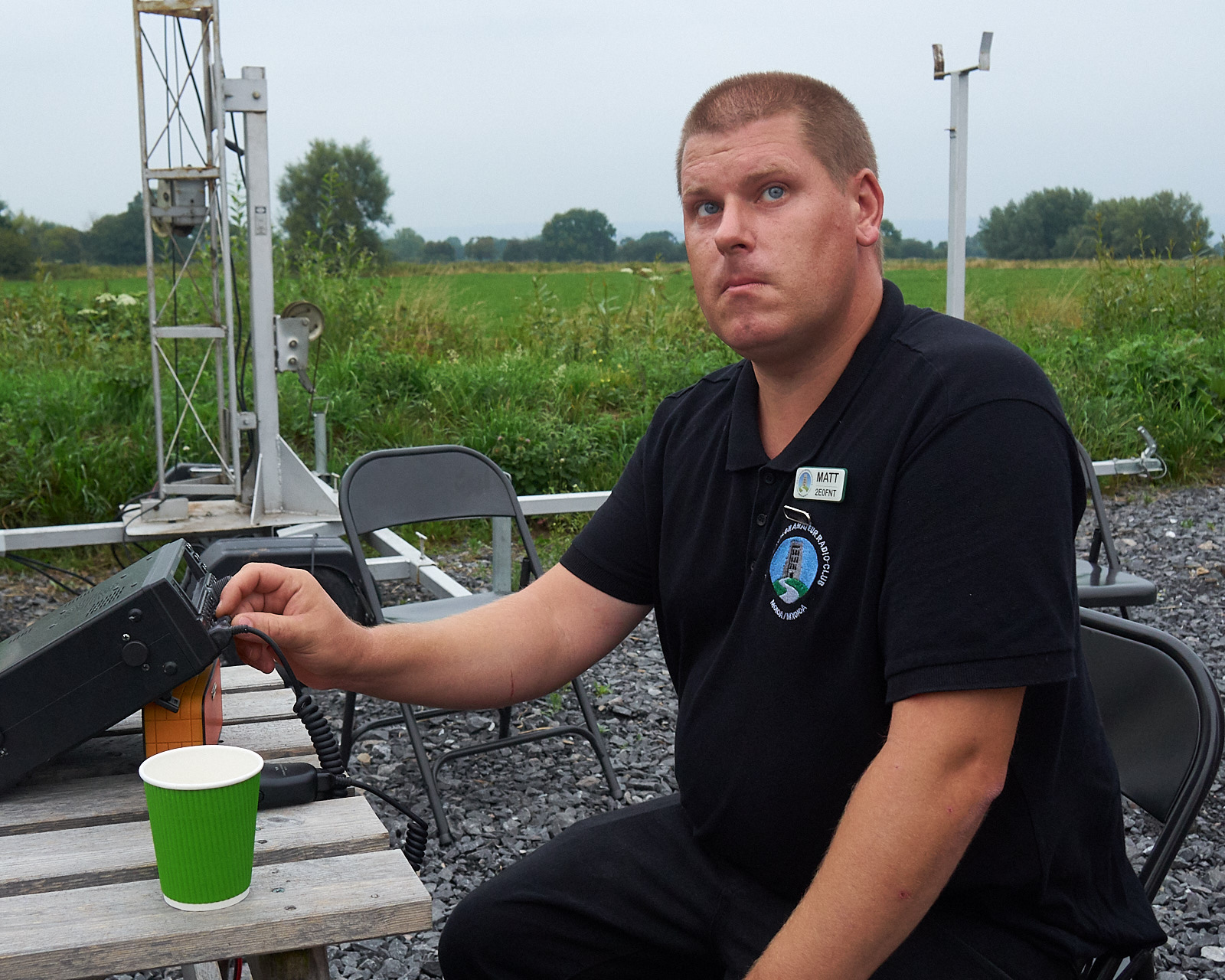Site 2 outside field meeting, testing Raspberry Pi field computer
The weather looked fine among the thunderstorms, so we held this week’s meeting outside at the field known as Site 2.

Matt 2E0FNT rigged a longwire antenna as well as the site’s 2m antenna.


We had the good news that Rupert has passed his Foundation, keen to progress he has now booked the Intermediate exam. He hasn’t got his call through yet, but we look forward to welcoming him to the air. He has constructed a Slim Jim from the measurements on Essex Ham, we tested the SWR and it read high at nearly 10. However, opening out the frequency range showed it had a minimum at about 127 MHz, so we lent him a MFJ-226 SWR meter so he can trim the length of the antenna to optimise it for about 145.5 MHz. It did make me wonder if the calculator had allowed for the velocity factor - frequency is about 0.9 of what it should be and the source calculator states
I have added the ability to select the velocity factor of your conductor. It is set by default to 0.96, which is for bare copper or bare aluminium. If you use balanced feeder such as 300Ω or 450Ω, adjust it to 0.9
Rupert used ladder line, so this would be the second case.
Raspberry Pi field computer test
I tested a Raspberry Pi4 that will hopefully be deployed for a SOTA trip to Win Green G/SC-008 near Shaftesbury. We plan to activate it on Sunday the 23rd August.
We can do digimodes with the Pi, the Pi4 is powerful enough to run WSJT-X. I used the 2Gb memory version, though if you are getting one specifically to use with FT8 it appears that there’s a strong case to be made to get the 4Gb model, because it appears WSJT-X can use the extra memory and you gain 2.5 seconds decode time.
There is a SOTA G/SE activity weekend on the 22/23 August on page 16 of the August Radcom (RSGB login needed). We hope to give those guys some S2S contacts and pick up some points.
It was good to test it since it wouldn’t boot without a network. The secret seemed to be
sudo raspi-config and make sure ‘wait for network on boot’ is off.
It was good to find this out before hauling it up a hill many miles out of reach of my wifi network ;)
